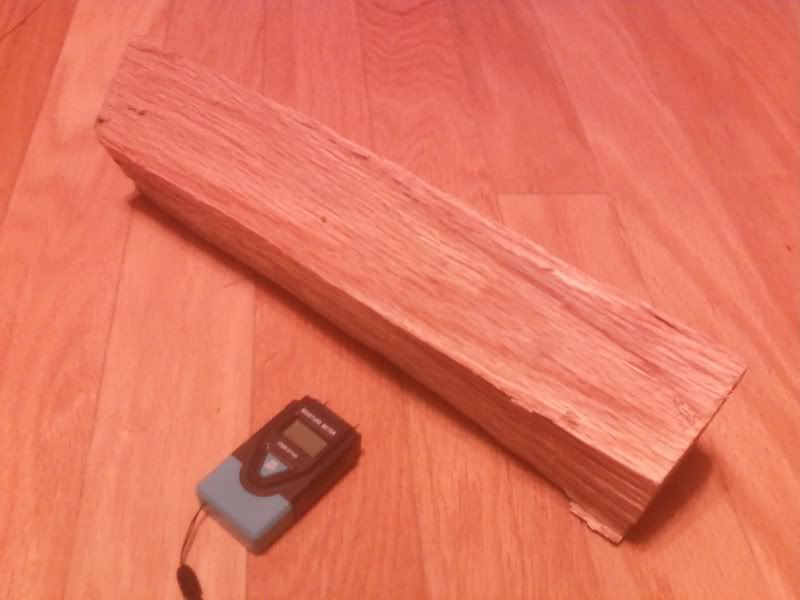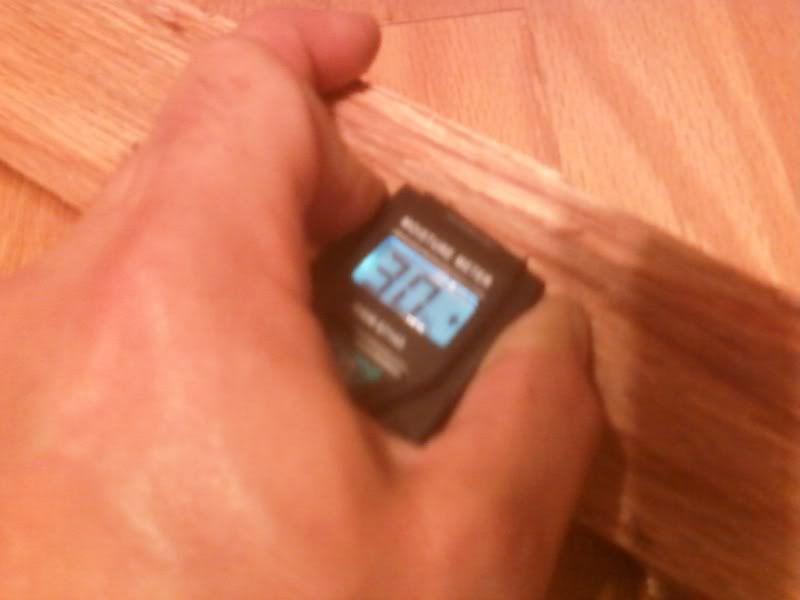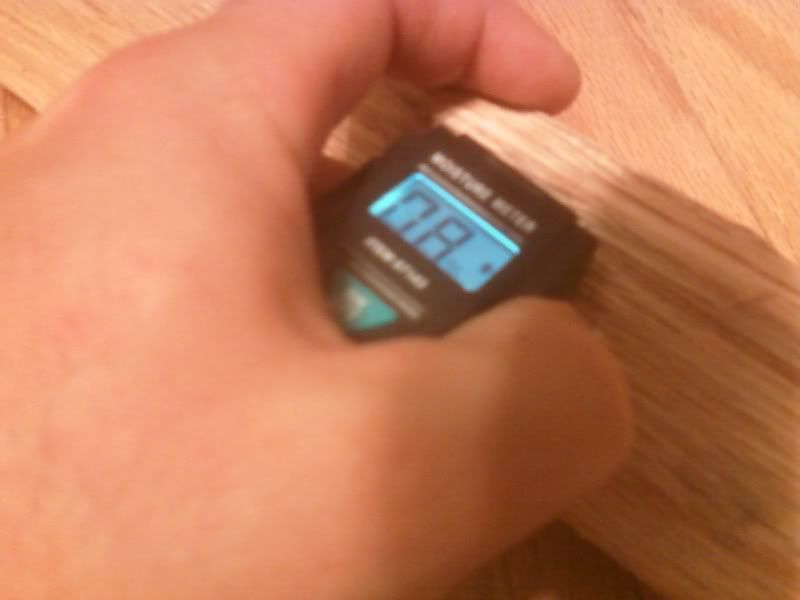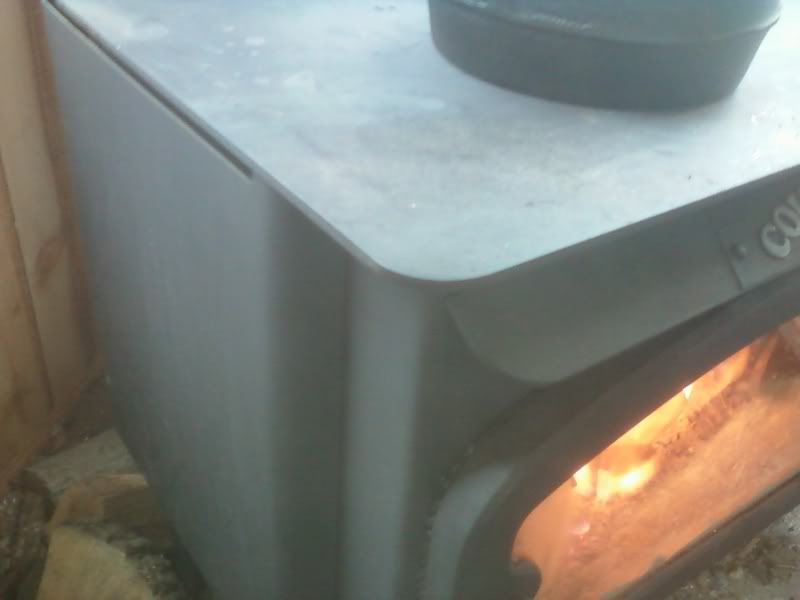In the past, I have mentioned a system I have used to dry green wood. I figured I would try to add some scientific measurements and pictures for this thread.
In this case, I split a 16" green, Red Oak round into similar sized pieces (about 2-3" in width, by 16" long) and removed all the bark.

Testing for moisture immediately after splitting and bringing inside, (probes are jammed in as deep as possible):

I then stacked the pieces, house-of-cards-style, right next to my stove, for 3 full days- 72 hrs. During this time, the stove burned non-stop.
Testing for moisture 72 hours later, (again, probes are jammed in as deep as possible):

The pieces lit off immediately and burned hot. No sizzling whatsoever.
A few tips I have found which aid in drying:
Split into 4 sided pieces to maximize surface area.
Remove the bark as completely as possible.
Split into smaller pieces (2-3" wide) especially for dense hardwoods.
Stack right next to the stove-nearly touching the steel.
In this case, I split a 16" green, Red Oak round into similar sized pieces (about 2-3" in width, by 16" long) and removed all the bark.

Testing for moisture immediately after splitting and bringing inside, (probes are jammed in as deep as possible):

I then stacked the pieces, house-of-cards-style, right next to my stove, for 3 full days- 72 hrs. During this time, the stove burned non-stop.
Testing for moisture 72 hours later, (again, probes are jammed in as deep as possible):

The pieces lit off immediately and burned hot. No sizzling whatsoever.
A few tips I have found which aid in drying:
Split into 4 sided pieces to maximize surface area.
Remove the bark as completely as possible.
Split into smaller pieces (2-3" wide) especially for dense hardwoods.
Stack right next to the stove-nearly touching the steel.








